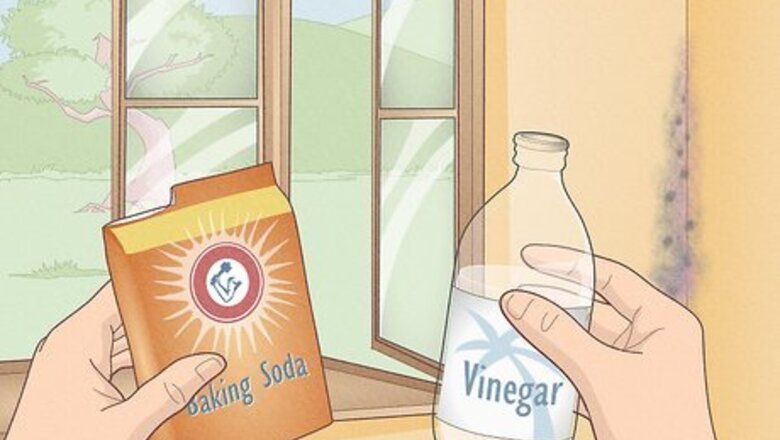
views
- Spray the mold with a mixture of 1 part baking soda and 5 parts water for a mild cleaner.
- Spray the mold with straight vinegar for a stronger cleaner, or a mixture of equal parts vinegar and water.
- Combine a small amount of detergent with water to make a gentle cleaning agent.
- Dilute 1 part bleach with 3 parts water to make a powerful, mold-killing spray.
Coated or Painted Drywall
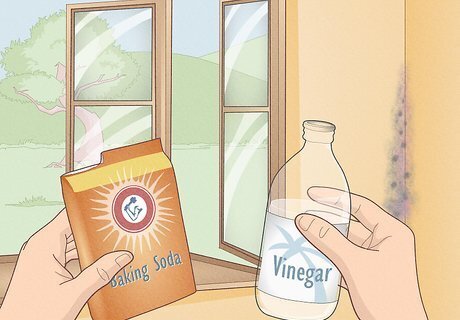
Choose a cleaning agent. Cleaning agents range from mild to potent and include both natural and chemical alternatives. If you have small children or pets in your home, you may want to consider a milder, natural solution over a powerful chemical one. If you have a more advanced mold problem, a stronger chemical may be necessary. Combine one part baking soda with five parts water. Baking soda is the mildest, safest cleanser available that is commonly used against mold. Use straight vinegar or vinegar mixed in equal parts with water. Vinegar is a little stronger than baking soda but it is still natural and safe to use around children and pets. Try an unscented detergent. Since one of the easiest ways to identify the presence of mold is by smell, using an unscented detergent guarantees that no other smells will interfere with your ability to detect the smell of mold. Detergents are still relatively safe to use around kids and pets even though they are a chemical product. Combine the detergent with a small amount of water. Use diluted bleach. Some sources recommend the use of bleach while others do not. Objections to bleach are primarily due to how harsh it is and how potentially harmful it can be to breathe in. Some also believe that its effectiveness is not reliably consistent. Nonetheless, it still remains one of the strongest cleaners effective against mold and safe for painted drywall. Mix one part bleach with three parts water.
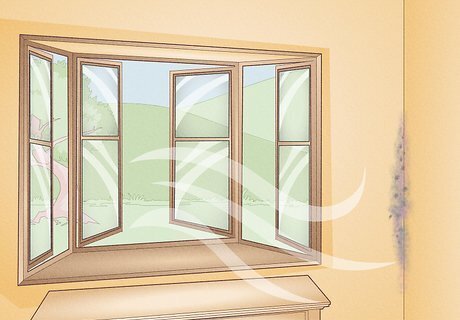
Keep the room well ventilated. To remove mold, you may need to work with chemical cleaners. Many of these cleaners can be harmful if inhaled and, as a result, you should keep the doors and windows open as you work. Never direct a fan of any kind into the room or you will spread the spores everywhere! A fan may be placed in windows facing outward to push bad air outdoors. You should seal off doors with plastic to avoid spreading the mold spores in other areas of the house.
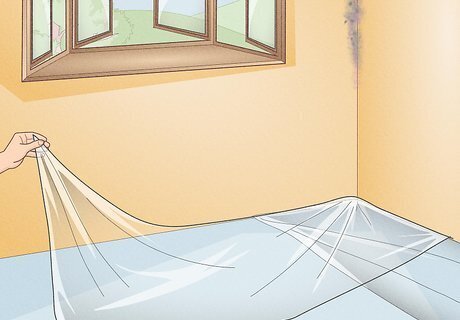
Protect the surrounding area. To prevent potential damage that could result if you accidentally spill chemicals or cleaners, protect anything that you do not plan on working with directly. Remove furniture and decorations to the other side of the room or out of the room completely. Cover the floor with newsprint or plastic drop cloth and tape the coverings taped in place. Keep an old rag on hand to catch any spills as you notice them.
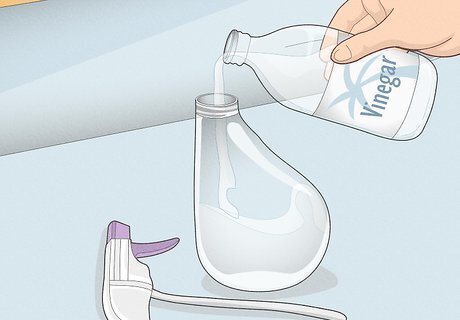
Add the cleaning solution to a spray bottle. Pour the cleansing agent and water into a spray bottle and shake to combine. Make sure that the solution is thoroughly combined to ensure effectiveness.

Spray a small amount of the solution onto the mold. Do not drench the area, since additional moisture can actually increase the mold problem rather than getting rid of it. Spray to mold once or twice over, making sure that each area has been covered with the solution but without using so much solution that it begins dripping off.
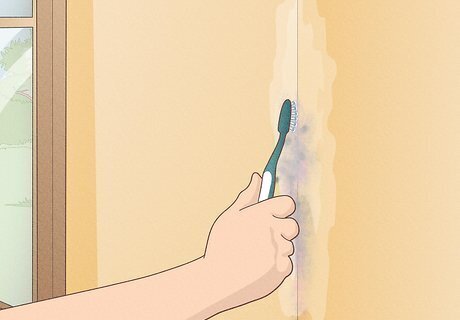
Scrub the area with an old toothbrush. A dish sponge with an abrasive side can also work. Scrub the area until you no longer see any discoloration or visible mold.

Dry the area out. Since mold can start developing if you leave the area moist, point an electric fan on the spot to help it dry out faster.
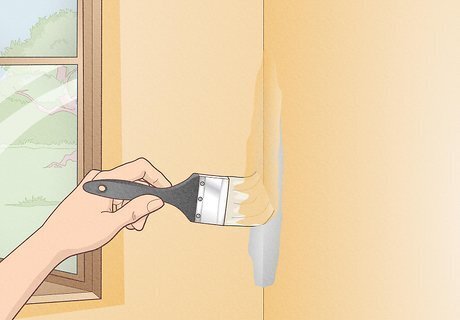
Apply a stain-blocking paint. If some mild staining still exists even after you have removed the mold, use a stain-blocking primer and paint to mask it.
Unpainted Drywall
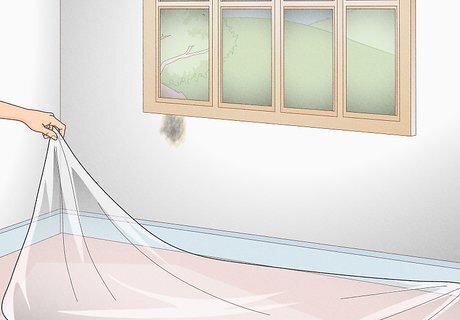
Cover the area with plastic sheeting. As you work, mold spores could break free from the drywall. To prevent them from finding their way into the flooring, cover the flooring and anything in the surrounding area with plastic sheeting. Tape the sheeting in place.

Mark the areas of the wall that have mold. Use a pencil to lightly draw a box around every area with visible mold. The area should be 5-6 inches larger than the stain itself and should span an area that extends over at least two wooden wall beams behind the drywall. Removing more wall than necessary will increase your odds of removing unseen mold spores and will also make it possible to replace the section of drywall.
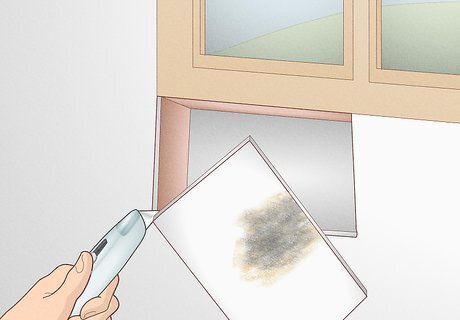
Cut the area out with a utility knife. Saw along the line with your knife, pointing it out and away from you as you work. When the patch of drywall comes free, carefully remove it and set it down, mold-side up, on the plastic.
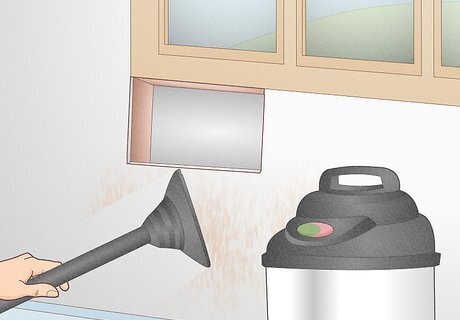
Clean the inside of the room with a HEPA (High Efficiency Particulate Air) vacuum. Mold spores may have been stirred up during the process, but using a HEPA vacuum should remove them.
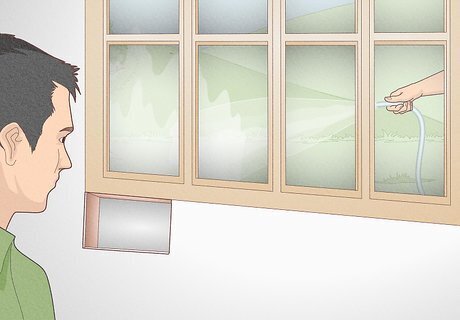
If your mold spot has appeared by a door or window, while the inner wall is open have someone spray water on the door or window with a hose and monitor for any moisture coming in. Sometimes it can take 5 minutes of spraying with water before any leak will show itself. Once located, seal from both the outside and inside to prevent moisture coming in (again mold is only caused where there is moisture).
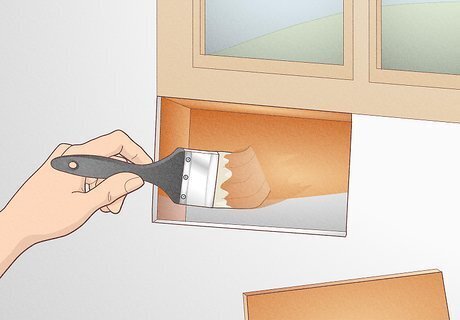
Before replacing the drywall, it is recommended to paint the interior wall cavity with an elastomeric paint like Kilz, and also paint the backside of the drywall you are replacing. Cut a new section of drywall. Use a tape measure to measure the hole and, using a utility knife, cut a piece of fresh drywall that fits the exact same measurements.
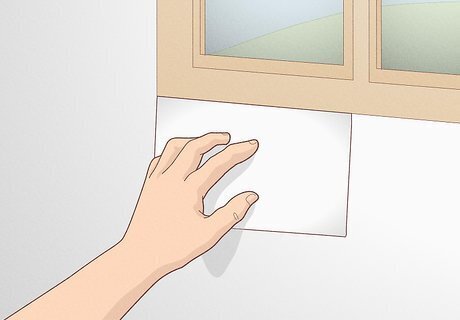
Fit the new piece of drywall in the hole. It should be a tight, snug fit.
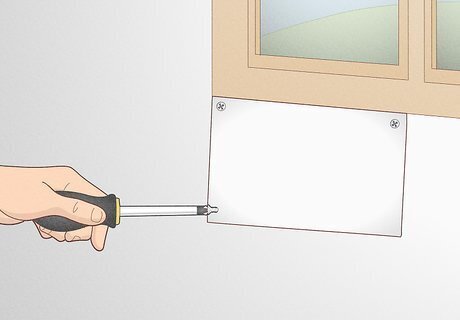
Secure the new section of drywall. Use drywall screws and a screwdriver to attach the drywall to the wooden beams in the wall behind it.

Apply joint compound. Joint compound, also called drywall compound, should be applied to the perimeter of the new section of drywall to help join it with the rest of the wall and to seal any cracks in between the sections.

Smooth the joint compound after it dries. After 24 hours have passed, you can use sandpaper or a gentle sander to smooth the dried joint compound out.
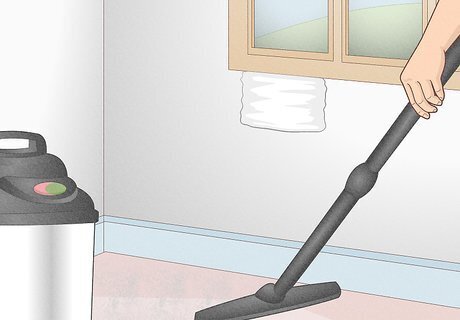
Vacuum the entire area with a HEPA vacuum. Mold spores could have landed on surrounding wall or flooring, even with the plastic coverings in place. Remove as much as possible with a HEPA vacuum.



















Comments
0 comment